Market To Market: Moving Ahead: What's In Store For Real Estate

jessica.kirsh / mavo / Ton Anurak / Gino Santa Maria / kurhan / Shutterstock.com
The housing market, in the past year and a half, has been harrowing to say the least. Mortgage rates plummeted to historic lows. In many markets, sky-high-priced homes were snapped up in days, if not hours, and half of U.S. homes sold for more than their list price, according to Redfin, with homebuyers paying tens of thousands—and sometimes hundreds of thousands—over list price.
Fueled by an ongoing housing shortage, U.S. home prices surged nearly 20 percent from September 2020 to September 2021, according to Core Logic. For-sale signs that popped up in yards around the country didn’t last long. In 2021, half of U.S. homes sold in less than a week, according to Zillow. Compare this to 2010, when homes were on the market for an average of 140 days.
So, will the rollercoaster ride continue this year or even out a bit? Realtor.com’s September 2021 national housing report indicates that the market will remain strong but will balance out between buyers and sellers. Median listing prices in many metro areas are beginning to fall, which is a good sign that the housing market is starting to stabilize.
If you’re hoping to get a foot in the door with clients serving the real estate industry, now is a great time. When looking for a home, most buyers (87 percent) use a real estate agent, according to the National Association of Realtors. Using promotional products to market these services is a smart move. They can help real estate professionals and companies get seen and remembered, which is especially valuable in a competitive market.
In a field with a mantra of “location, location, location,” promotional products provide premium brand visibility on desktops, in homes and out in the community. From sponsoring local schools and sports events to handing out promotional products at community festivals, real estate pros can use promotional products in all kinds of ways.
––––––––––––––––––––––––––––––––––––––––––––––––––––––––––––––––––––––––––

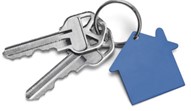
In a frenzied real estate market, some buyers made snap decisions they later regretted. In fact, nearly two-thirds of Millennials have homebuyer’s remorse, according to Bankrate. About 33 percent of boomer buyers had regrets after buying a home last year. They’re kicking themselves over several issues, including home maintenance costs and remorse over the home itself.
Whether homebuyers think their home isn’t the right size or they’re unhappy with the location, related businesses, such as landscapers, interior decorators and cleaning companies, can help right some of the wrongs. Real estate professionals can co-market with businesses that can help homeowners feel more comfortable in their new abode. Welcoming homebuyers with promotional gifts can open the door to new relationships, help buyers feel more at home and prompt referrals.
––––––––––––––––––––––––––––––––––––––––––––––––––––––––––––––––––––––––––
![]()
Homes sold for an average of $21,000 in 1965. In 2021, the average sale price of a new home was $408,800.
Source: Statista
––––––––––––––––––––––––––––––––––––––––––––––––––––––––––––––––––––––––––

- Keller Williams Realty
- RE/MAX
- Coldwell Banker Real Estate
- Century 21
- Berkshire Hathaway HomeServices
- Compass
- eXp Realty
- Sotheby’s International Realty
- HomeServices of America
- EXIT Realty
Source: Upnest.com
––––––––––––––––––––––––––––––––––––––––––––––––––––––––––––––––––––––––––

Women earn 81 percent of what men do, but single women outpace single men when it comes to homeownership. Nowhere in the country do single men own more homes than single women. Across the nation’s 50 largest metro areas, single women own about 5.2 million homes, while single men own about 3.6 million homes.
Source: LendingTree.com
––––––––––––––––––––––––––––––––––––––––––––––––––––––––––––––––––––––––––

- More than 156,600 real estate agents work in the U.S.
- 54 percent are women
- The average age of real estate agents is 48 years old
- Most real estate agents are white (74 percent), followed by Hispanic (12 percent), Asian (six percent) and Black (five percent)
- They earn a median annual salary of nearly $100,000
Source: Zippia
––––––––––––––––––––––––––––––––––––––––––––––––––––––––––––––––––––––––––
![]()
People are on the move—mostly to the southern and western U.S., according to this ranking, showing cities where the population has increased most in the past decade. The following is based on census data from 2010-2020 and reflects percentage increases in population and absolute numbers.
- Frisco, Texas
- Meridian, Idaho
- McKinney, Texas
- Sugarland, Texas
- Kent, Washington
- Murfreesboro, Tennessee
- Round Rock, Texas
- Pearland, Texas
- Irvine, California
- Bend, Oregon
- Edinburg, Texas
- Midland, Texas
- Cape Coral, Florida
- Denton, Texas
- League City, Texas
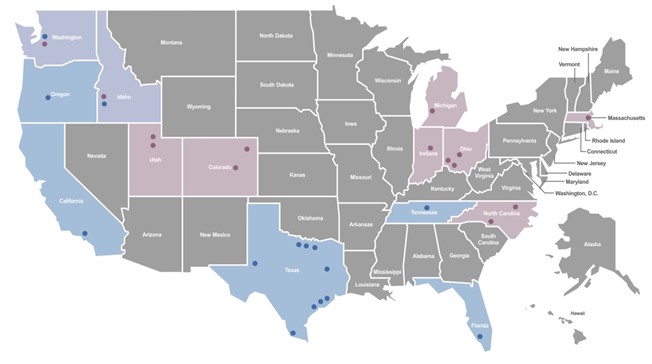
Source: ConsumerAffairs Research Team
––––––––––––––––––––––––––––––––––––––––––––––––––––––––––––––––––––––––––

Generation Z—those born between 1997 and 2012—have their sights set on homeownership, and they’re going for it. Nearly 86 percent of Zoomers plan to buy a home before age 35, and about half expect to buy a home in their 20s. Compare this to about 35 percent of Millennials who bought a home before age 35.
Here’s why they want a home of their own:
- They want a place to call their own: 82%
- They believe owning a home is a good investment: 50%
- They want a good home for their pets: 41%
- They would feel safer if they owned their home: 33%
- They want to feel part of a community: 15%
Source: Homes.com
––––––––––––––––––––––––––––––––––––––––––––––––––––––––––––––––––––––––––

Homes get snapped up the fastest in these U.S. cities. Here’s how long homes are on the market, on average:
- Columbus, Ohio: 8 days
- Denver, Colorado: 9 days
- Raleigh, North Carolina, and Seattle, Washington: 10 days
- Boise, Idaho, and Cincinnati, Ohio: 11 days
- Grand Rapids, Michigan: 11.5 days
- Ogden and Salt Lake City, Utah; Indianapolis, Indiana, and Boston, Massachusetts: 12 days
- Colorado Springs, Colorado; Dayton, Ohio, and Charlotte, North Carolina: 13 days
Source: Zillow
––––––––––––––––––––––––––––––––––––––––––––––––––––––––––––––––––––––––––

Homebuyers by age:
- Age 41-55: 24%
- Age 31-40: 23%
- Age 56-65: 18%
- Age 66-74: 14%
- Age 22-30: 14%
- Age 75-95: 5%
- Age 21 and younger: 2%
Homebuyers by Ethnicity:
- White: 83%
- Hispanic: 7%
- Asian/Pacific Islander: 5%
- Black: 5%
Source: 2021 National Association of Realtors Home Buyer and Seller Generational Trends
––––––––––––––––––––––––––––––––––––––––––––––––––––––––––––––––––––––––––

- Caring for aging parents: 25%
- Spending more time with aging parents: 16%
- Cost savings: 16%
- Children over 18 moving back in: 14%
- To be in a larger home: 12%
- Children over 18 never left: 14%
- Other: 8%
Source: 2021 National Association of Realtors Home Buyer and Seller Generational Trends
––––––––––––––––––––––––––––––––––––––––––––––––––––––––––––––––––––––––––

![]()
Most buyers (81 percent) purchased single-family homes last year. Seven percent bought a townhouse, four percent bought a duplex and one percent bought an apartment or condo.
Here’s how long they plan to stay in their new residence:
- 16 years or more: 44%
- 8-10 years: 23%
- 4-5 years: 14%
- 11-15 years: 9%
- 2-3 years: 5%
- 6-7 years: 4%
- 1 year or less: 1%
Source: 2021 National Association of Realtors Home Buyer and Seller Generational Trends
––––––––––––––––––––––––––––––––––––––––––––––––––––––––––––––––––––––––––
![]()
In addition to real estate agents, there are many other types of companies that service those who are buying and selling their homes such as:
- Listing agents
- Mortgage lenders
- Title insurance companies
- Appraisers
- Home inspectors
- Alarm companies
- Moving and storage companies
––––––––––––––––––––––––––––––––––––––––––––––––––––––––––––––––––––––––––

Real estate agents can warmly welcome homebuyers to their new residence with the Waverly Silver Fox Blanket™ featuring a soft, fur-like finish, this luxurious blanket includes a hidden zippered compartment that conceals the backing on the embroidered design.

Towel Specialties / PPAI 113150, S7 / www.towelspecialties.com
––––––––––––––––––––––––––––––––––––––––––––––––––––––––––––––––––––
The For Goodness Bakes gourmet baking kit makes a heartfelt gift from real estate agents or mortgage lenders. The box includes baking essentials such as baking soda and flour along with a recipe card for chocolate chip cookies. It is also available with an apron or tote.
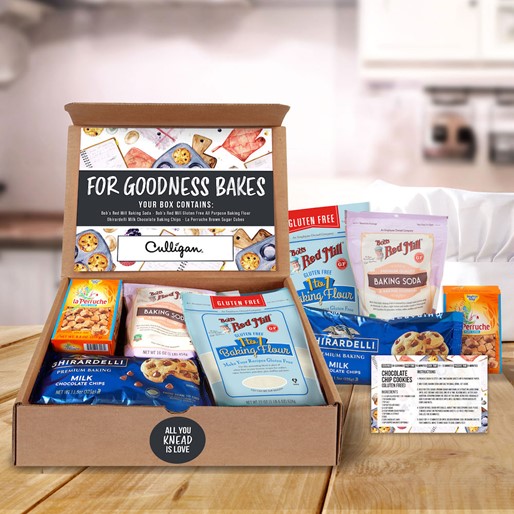
NC Custom / PPAI 111662, S7 / www.nccustom.com
––––––––––––––––––––––––––––––––––––––––––––––––––––––––––––––––––––
Featuring bright colors, a soft-touch finish and gel ink, the Islander Softy Brights Gel Pens make a splash at any event. Distribute these cap-off pens at trade shows, job fairs and festivals to get a Realtor®’s name out there.

Goldstar / PPAI 114031, S10 / www.goldstarpens.com
––––––––––––––––––––––––––––––––––––––––––––––––––––––––––––––––––––
Celebrate closing day with the 4-in-1 Drink Cooler. Designed to fit slim cans, standard cans and bottles, it also doubles as an insulated drinking cup. The cooler fits cupholders and keeps beverages ice-cold for hours. Choose from blue, coral, stainless steel and white.
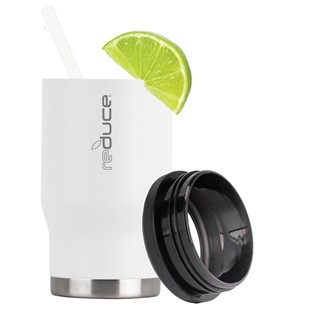
The Allen Company / PPAI 113879, S5 / www.allenmugs.com
––––––––––––––––––––––––––––––––––––––––––––––––––––––––––––––––––––
The Masia Six-Piece Cheese and Dip Set is perfect for home entertaining. Homebuilders can add their logo to the slate cutting surface for a memorable and useful promotional gift. The kit includes ceramic cups, a stainless-steel knife with a forked tip and a slate board.
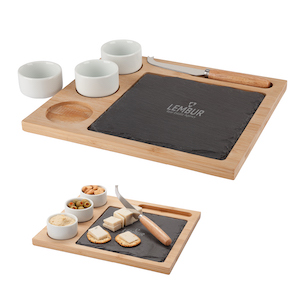
Logomark, Inc. / PPAI 110898, S12 / www.logomark.com
––––––––––––––––––––––––––––––––––––––––––––––––––––––––––––––––––––
Real estate agents can load the Silver Key USB Flash Drive with floor plans, virtual tours and more. When they meet with prospective buyers, they can hand them a logoed flash drive for a powerful and effective marketing tool.
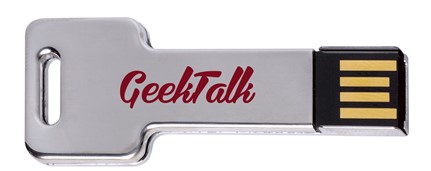
IMAGEN Brands / PPAI 113430, S10 / www.imagenbrands.com
––––––––––––––––––––––––––––––––––––––––––––––––––––––––––––––––––––––––––

A number of factors—such as large vacancies in commercial buildings, company downsizing and work-from-home preferences—are driving what could be a major real estate trend: converting vacant office buildings into apartment homes. Developers are eyeing the possibility in an effort to find a useful purpose for empty office buildings and bring neighborhoods back into urban areas.
Since pandemic-related lockdowns sent millions of workers home in March 2020, many office spaces have stood empty all across the U.S. and some of them remain dark. By the end of 2020, 137 million square feet of office space was available for sublease, according to the CBRE Group. That's the largest number since 2003—and an increase of 40 percent from 2019. Yet, commercial rents are still going up. The most recent Cushman & Wakefield MarketBeat report revealed that 17.2 percent of U.S. office buildings were empty during the second quarter of 2021. This is the highest vacancy rate since it peaked at 17.3 percent in the third quarter of 2010. Every region of the country is affected, from Brooklyn and Philadelphia to Los Angeles and San Francisco; Houston, Chicago, Atlanta, Denver, Dallas, Cincinnati and Minneapolis also report high vacancy rates.
Converting an existing office building into a home is an example of adaptive reuse—a concept first seen in Manhattan in the 1960s. Read more about this trend and how it can open new promo opportunities in the residential real estate market in an article published on Rent.com’s blog at www.rent.com/blog/empty-office-building-turned-into-homes-next-apartment-trend.
––––––––––––––––––––––––––––––––––––––––––––––––––––––––––––––––––––––––––
Audrey Sellers is a Dallas-Fort Worth-based writer and former associate editor of PPB.

